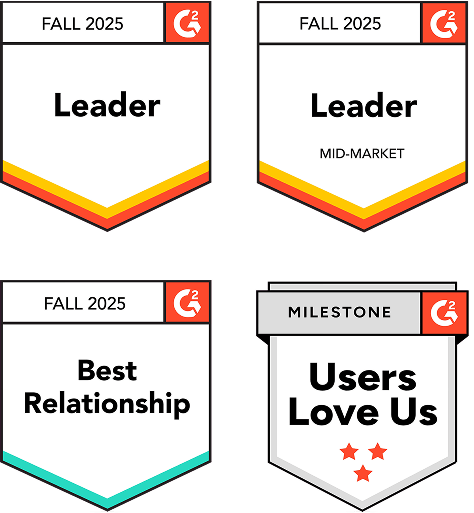You’ve got a brilliant product, and you’re excited to bring it online. It’s going to save lives and revolutionize industries – not to mention generate future financial benefits. But first, you’ve got to expand your fixed assets, automate your operations, and validate each improvement.
Your facility expansion, equipment acquisition, digital systems and automation investment, and regulatory compliance efforts are capital expenses that don’t just require money – they need to be checked and validated, too. Every step you take towards building your project pipeline needs sign-off. And if it takes too long or creates a bottleneck, those validation processes risk inflating your capital expenditures budget or diminishing your investment’s long-term value by stalling its ability to generate revenue.
Protect your capital expenditure (CAPEX) budget and enjoy lower operating expenses by adopting futureproof digital validation processes. You’ll upgrade facilities faster, meet compliance demands easier, and bring your products to market on schedule, all while keeping your books in the black.
Capital expenditures budgets are vital to life sciences
In life sciences, CAPEX investments are never-ending. Your fixed assets account for the lion’s share of your Total Installed Cost (TIC) – buying, upgrading, expanding, and inspecting, and validating (IQ, OQ, PQ, DQ) facilities and clean rooms already swallows most of your budget. But even those smaller-but-still-vital physical assets like installing new freezers nibble away at your capital expenditures budget.
You can’t force financial health by slashing equipment budgets. Those costs represent strategic investments, and reducing overhead by cutting corners will only stifle your company’s ability to grow. However, finding efficiency in the process can bring your budget back into the black without sacrificing strategic gains. A smoother validation process reduces your Cost per Qualified Line and improves your overall operational efficiency.
Your CAPEX budgets may have line items that allow you to maintain physical assets or balance a depreciation expense, but ultimately, CAPEX investments do far more. They’re essential to:
- Guarantee your regulatory compliance
- Automate production (and thus reducing operational expenditures)
- Bring products online faster
- Diversify your product offerings and entering new markets
CAPEX projects are the cost of doing business, and without them, your company’s asset base will stagnate. But you can achieve successful CAPEX management, complete with a faster time-to-market and expanded production capacity, with digital validation.
Digital validation gives your CAPEX budgeting process the nip/tuck it needs
Validation costs pose a challenge for life sciences companies – 2/3 of which indicated in the 2024 State of Validation report that validation expenses consume 8-10% of their project budgets, and sometimes more. In fact, the ISPE CQV Baseline Guide reports that the cost is slightly higher – between 8-15% of the total project cost – when validation is achieved through paper and hybrid methods.
But digital validation works against that trend, trimming your validation budget and keeping CAPEX investments within scope.
Build greenfield projects faster and offset high initial costs
New construction is a great way to sidestep the complications of bringing aging infrastructure up to modern manufacturing speed. But greenfield CAPEX projects are pricey, demanding serious initial investment before the site generates any revenue. Plus, they’re long-term investments – you may be stuck in the construction phase for a year or more before your company starts to see a return.
But digital validation keeps your greenfield investment moving at pace, ensuring every piece of the project – from compliance-ready HVAC to repeatable automation equipment and software – gets the signatures it needs. Milestones that depend on other milestones are connected within the digital validation system, prompting staff to take the next step once a validation hurdle’s been crossed so your long-term project is finished faster.
Update existing assets and brownfield sites sooner
Brownfield projects might allow you to enter the market faster for a lower initial investment, but they also come with complexities. Older equipment is often out-of-date and completely unregulated, requiring lengthy and costly upgrades. Expanding and improving existing facilities could require shutdowns, affecting production and cash flow. And you can’t resume day-to-day operations until validation’s complete.
Brownfield CAPEX projects are complicated, but the validation process doesn’t have to be. Digital validation tools give you the competitive edge, helping you complete brownfield upgrades faster. Assigning validation tasks, monitoring who’s completed each assignment, and tracking progress are as simple as logging in and checking a dashboard. Software-generated reminders and notifications make communication effortless, and when you need to produce a validation report, it’s a click away. Each feature shaves hours off validation processes, protecting your project’s timeline and budget.
Eliminate validation bottlenecks in CAPEX projects
At every juncture, no matter what improvements you’ve made or automation you’re piloting, your capital assets need sign-off. But when it doesn’t happen fast enough, the pause affects more than just one department or sector. Multiple processes pile up behind slow validation, creating a bottleneck effect that stops production and ultimately, business growth.
Digital validation keeps your CAPEX project on budget and on deadline. It’s instantly accessible to every stakeholder, removing the need for physical signatures and essentially eliminating the time it takes to chase them.
Streamline operational expenses and activities
After the dust has settled on your CAPEX project, digital validation continues to benefit your company’s financial health by improving operational efficiency, too.
In life sciences, validation presents ongoing costs. You don’t stop needing sign-off just because the plant’s built or the equipment’s updated. Traditional validation expenses – from paper and printing to the labor hours spent getting signatures – continue to impact your company’s balance sheet.
But digital validation reduces money spent on office supplies like paper, ink, printers, and upkeep. It saves time on compiling validation paperwork, saving money on employee hours, too. Digital validation is one of the most effective ways you can cut OPEX costs and streamline your company’s operations while improving safety and meeting compliance regulations easier.
The validation cost of CAPEX by facility type
The type of facility or manufacturing line being built in a life sciences CAPEX project has a direct and significant impact on the complexity, scope, and cost of validation. Facilities such as sterile manufacturing plants, cell and gene therapy suites, high potency/oncology labs, multi-product sites, and continuous manufacturing lines face the strictest regulatory scrutiny. These environments require more extensive qualification protocols, advanced containment or aseptic controls, and tightly documented validation trails – resulting in higher labour hours and validation costs that can exceed 15–20% of total project cost.
These high-complexity projects also represent the greatest opportunity to benefit from digital validation tools. By digitizing workflows, automating traceability, and accelerating approvals, digital validation platforms can significantly reduce validation costs, shorten timelines, and improve compliance—unlocking substantial ROI, particularly in the most highly regulated, resource-intensive settings.
| Facility Type | Applicable Regulations | Typical Paper-Based Validation Cost (% of Project Cost) | Potential Cost Using Digital Validation* |
| Sterile Injectables (Aseptic) | – Annex 1 (EU) – Annex 15 (EU) – ISO 14644 (Global) – 21 CFR Part 211 (FDA) – FDA PV Guidance (FDA) | 12–20% | 4–10% |
| Biologics / Cell & Gene Therapy | – Annex 15 (EU) – Annex 11 (EU) – ICH Q8–Q10 (Global) – ISO 14644 (Global) – FDA PV Guidance (FDA) | 10–18% | 3–9% |
| Multiproduct (Shared Lines) | – Annex 15 (EU) – EU GMP Chapter 5 (EU) – 21 CFR Part 211 (FDA) – ICH Q9 (Global) | 10–16% | 3–8% |
| HPAPI / Containment Facilities | – Annex 15 (EU) – EU GMP Chapter 3 (EU) – ISO 14644 (Global) – ICH Q9 (Global) | 9–14% | 3–6% |
| Continuous Manufacturing | – Annex 11 (EU) – ICH Q8 (Global) – 21 CFR Part 11 (FDA) – FDA PV Guidance (FDA) | 10–17% | 3–8% |
| Oral Solid Dose (OSD) | – Annex 15 (EU) – EU GMP Chapter 5 (EU) – 21 CFR Part 211 (FDA) | 8–12% | 2–5% |
| API Manufacturing | – Annex 15 (EU) – ICH Q7 (Global) – EU GMP Part II (EU) | 8–10% | 2–4% |
Learn more about digital validation and take the first step to trimming your CAPEX budgets.






